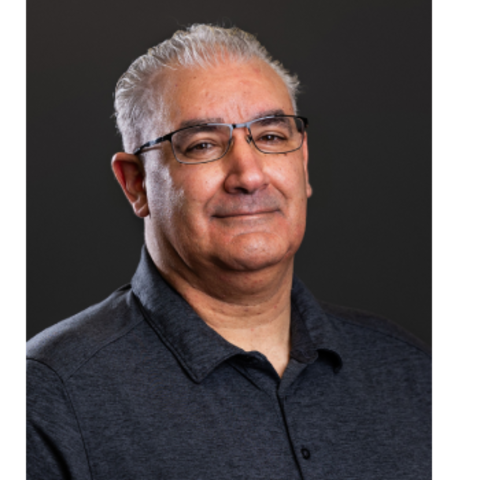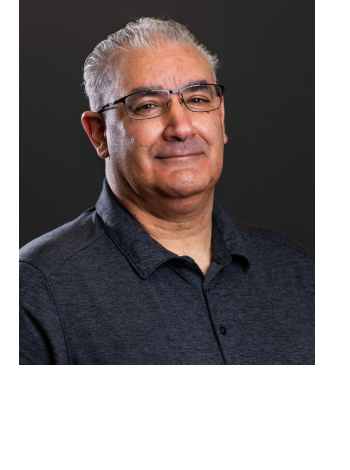Faculty



Bio
I am an anatomist and biological anthropologist by training with particular interest in osteology, gross anatomy, and forensic science. While attending Hamline University I worked with the anthropology department on several Native American burial recovery projects throughout Minnesota. Following the completion of my Master’s I returned to Minnesota as an autopsy technician at the Hennepin County Medical Examiner’s office, performing dissections to assist the forensic pathologists in determining cause of death.
Education
Contact
Address
Department of Biomedical Sciences319 SMed
1035 University Drive
Duluth, MN 55812


Research Summary
The complex role of extracellular RNA (exRNA) in health and disease is just beginning to be elucidated. Previously it was thought that RNA molecules could not survive in the circulation or in extracellular locations. However, with improved methods for detecting small RNAs, it has become clear that microRNAs and other small RNA molecules exist in all biological fluids and are expected to play a role very much like cytokines thereby regulating many events in both health and disease. My research focus includes projects on identifying novel RNA molecules as biomarkers for earlier cancer detection, specifically in ovarian cancer. We have identified tRNA fragments in the urine of ovarian cancer patients and are currently exploring the role of these molecules in ovarian cancer cells and determining their ability to distinguish advanced stage ovarian cancer patients from less aggressive disease. In addition, we are developing novel molecular methods to study tRNA fragments (tRFs). These are "fragments that function" and are difficult to study with current methodology because they are a part of a mature tRNA. They are actively processed from mature tRNAs and may have many functions, although the function that we have confirmed, is much like a microRNA. We have shown that a specific tRF, tRF5-Glu is capable of binding to the BCAR3 (breast cancer anti-estrogen) mRNA and blocking expression. Another aspect of extracellular RNA that we study is the mode of their extracellular transport. We have developed a novel method to pull various small noncoding RNAs out from the media, once the media is depleted of a specific noncoding RNA it is possible to study the loss of that RNA molecule on cells grown in hanging drop cultures. In addition, to our work in cancer biology, we are also interested in the role of small RNAs in infectious disease. We are currently studying small RNAs expressed in patients with Lyme disease and in animal models. The field of small RNAs is rapidly expanding and we expect to continue these studies in additional disease sites and processes.
Teaching Summary
My teaching expertise for medical students includes molecular genetics, precision medicine, health disparities, cancer biology, biochemistry and basic science concepts. I frequently facilitate problem-based learning (PBL) for first and second year medical students. Recently I taught the graduate student course entitled, Diversity, Equity, and Inclusion in the Natural Sciences. I have mentored numerous students including, undergraduate and graduate students, as well as medical students, and faculty.
Education
Fellowships, Residencies, and Visiting Engagements
Honors and Recognition
Media Appearances
Professional Memberships
Grants and Patents
Patents
Contact
Address
Department of Biomedical Sciences223 SMed
1035 University Drive
Duluth, MN 55812


Bio
I am a board-certified anatomic and clinical pathologist with broad interest and experience obtained over more than 20 years of general pathology practice in the U.S. Navy. My career began in basic science, and I earned a Ph.D. in biochemistry before entering medical school. Specializing in pathology enabled me to apply my interest in basic science to clinical practice. I have subspecialty experience in breast, gastrointestinal, and pulmonary pathology. I have 30 years of teaching experience, spanning from serving as a teaching assistant during my graduate studies, to academic appointments at the Uniformed Services University of the Health Sciences in Bethesda, MD, and at the Rosalind Franklin University (Chicago Medical School) in North Chicago, IL, to my current position here at the University of Minnesota Medical School – Duluth. In addition to my clinical and academic experience, my Navy career offered me many administrative and leadership opportunities. I held numerous senior leadership positions, including Board of Directors level positions at multiple Department of Defense hospitals and one Veterans Affairs hospital. In 2011 and early 2012, I deployed in support of Operation Enduring Freedom, where I served as Staff Officer for Afghan National Security Forces Healthcare System Reconstruction and Development in Kabul, Afghanistan. I was responsible for developing the first strategic, coordinated campaign plan to guide NATO and Afghan National Security Forces Healthcare Development efforts.


Research Summary
I am studying the specific role of cerebellum underlying neuropsychiatric disorders and neurobiological mechanisms of episodic memory. I completed my Ph.D. training in Physiological Psychology at the University of Dusseldorf, Germany, with expertise in systematic neuroscience and psychopharmacology. Then I moved to New Orleans LA, United States, to study neuro-cortical connections. Afterward, I have deep interest in how neurons communicate with each other and decided to move to Duluth MN, United States, for doing research associated with synaptic transmission. Presently I am working in the studies of autism and schizophrenia with the application of electrophysiology, in vivo Ca2+ imaging, chemogenetic, optogenetic, immunochemistry, behavior, and genetic animal models to decipher their intrinsic cerebello-cerebral circuitry.
Education
Honors and Recognition
Professional Memberships
Contact
Address
Department of Biomedical Sciences355 SMed
1035 University Dr
Duluth, MN 55812


Research Summary
1) Endocrinology: Investigating the role of pituitary hormones as immunomodulators and regulators of development.
2) Lyme disease: Characterizing the entrance of Borrelia burgdorferi into macrophage by non-opsonic mechanisms.
3) Development of active learn tools to teach biomedical concepts
Teaching Summary
Membrane Biology
Receptor Biology
Immunology
Mentoring/Advising: undergraduate & graduate students
Courses Taught
Biochemistry Laboratory, Chem 5361
Immunobiology, MicB 5545
Immunopathology, MicB 5546
Molecular Pathogenesis, MicB 5555
Advanced Immunology and Immunobiology, MicB 8554
Evolution of Host Defenses, IBS 8980
Cell, Molecular and Developmental Biology, IBS 8102
The Biological Practitioner, IBS 8099
Medical School Immunology, MED 6541, MED 6520, MED 6724
Problem Based Learning Facilitator, Neuromedicine and IHO, MED 6566/6728
Service Summary
Lyme Disease Support; St. Luke’s Hospital
National Alliance for the Mentally Ill (NAMI)
Toastmasters International
Education
Fellowships, Residencies, and Visiting Engagements
Honors and Recognition
Professional Memberships
Contact
Address
Department of Biomedical Sciences323 SMed
1035 University Dr
Duluth, MN 55812


Research Summary
For more than two decades the focus of our research group has been the genetics of colorectal cancer. Four ongoing projects are characteristic of our work.
1. PLA2G2A gene and colorectal cancer. At the University of Wisconsin-Madison, work conducted in the laboratory Dr. William Dove identified the Pla2g2a gene as a component of the Mom1 locus (Cormier et al., Nature Genetics 1997; Oncogene, 2000), the first modifier gene of cancer identified in mammals following its positional cloning. Since moving to the University of Minnesota Medical School we have continued to work on understanding the mechanisms underlying Pla2g2a'srole in CRC. In a collaboration with researchers in the Netherlands we have shown that Pla2g2a confers resistance to tumorigenesis in the Muc2 knockout mouse model of inflammatory intestinal cancer and in AOM treated mice, in addition to its tumor resistance in ApcMin mice. Gene expression analysis has identified a large number of Pla2g2a target genes including Runx1. Using Runx1 conditional knockout mice we have shown that Runx1 is a novel tumor suppressor gene in the mouse GI tract. Most recently, in a collaboration with investigators in Rotterdam, mechanisms underlying Pla2g2a's tumor resistance in the intestinal stem cell compartment were described (Schewe et al., Cell Stem Cell, July, 2016).2.
Sleeping Beauty Transposon Mutagenesis screens in mice. In a collaboration with Dr. David Largaespada and co-workers at the University of Minnesota-Twin Cities that spans more than a dozen years, we have conducted forward genetic screens in the GI tract of mice using the Sleeping Beauty transposon system. This work has led to the identification of more than a hundred candidate driver genes for colorectal cancer, described in publications in leading journals such as Science, Nature and PNAS.3.
Role of the ion channel genes KCNQ1 and CFTR in colorectal cancer. Two ion channel genes that were initially identified as candidate cancer driver genes in Sleeping Beauty mutagenesis, KCNQ1 (Than et al.,Oncogene 2014; den Uil, British Journal of Cancer, 2016) and CFTR (Than et al., Oncogene, 2016), have been confirmed by our group as novel tumor suppressor genes in both mouse models and in human colorectal cancer. We have found that expression of both KCNQ1 and CFTR is associated with disease-free survival in early stage CRC and with a significant 23-month survival advantage in CRC patients with liver metastasis ( KCNQ1). Our findings for CFTR are consistent with the high susceptibility for colorectal tumor development in cystic fibrosis patients who are CFTR homozygous mutants. Preliminary work indicates that both KCNQ1 and CFTR may influence the intestinal stem cell compartment. To further investigate this question we have created 3D organoids from the small and large intestine of mice and humans. Our results indicate that organoids deficient for either KCNQ1 or CFTR demonstrate abnormal growth phenotypes, including organoid number, growth and differentiation.
4. Disease modeling in transgenic golden Syrian hamsters. In collaboration with Dr. Zhongde Wang at Utah State University we are testing the first genetically engineered golden Syrian hamster models of human disease. Hamster knockouts and knockins were created using CRISPR/Cas9-mediated gene targeting, piggyBac-mediated transgenesis and pronuclear injection. We are currently studying mechanisms underlying a novel cancer syndrome in KCNQ1 KO hamsters (Li et al., 2018), as well as widespread cancer development in TP53 KO hamsters. We are also interested in the role of cholesteryl ester transfer protein (CETP) mutant hamsters in disorders of the GI tract.
Selected Papers:
Patricia M Scott, Kyle J Anderson, Mekhla Singhania, and Robert Cormier. Cystic Fibrosis, CFTR and Colorectal Cancer. International Journal of Molecular Sciences. 2020, 21, 2891; doi:10.3390/ijms21082891.
Anderson, KJ, Cormier, RT, Scott, PM. The role of ion channel genes in gastrointestinal cancer. World Journal of Gastroenterology, 2019, Oct 14;25(38):5732-5772. doi: 10.3748/wjg.v25.i38.5732.
Rong Li, Jinxin Miao, M. Gerald O’Sullivan, Alexandre-Flaviu Tabaran, Kyle J. Anderson, Patricia M. Scott, Zhongde Wang, and Robert T. Cormier. A novel cancer syndrome caused by KCNQ1-deficiency in the golden Syrian hamster. J. Carcinogenesis, 2018, Oct 10;17:6. doi: 10.4103/jcar.JCar_5_18. eCollection 2018.PMID:30450013.
Teaching Summary
Genetics: Molecular Genetics, Classical Genetics, Medical Genetics and Cancer Genetics; Gastrointestinal Cancer.
Mentoring & Advising: In the past fifteen years, our research group has advised more than 50 research trainees at the undergraduate, graduate (Ph.D., M.S.), post-doctoral, and visiting scholar level. Our group currently includes six trainees.
Education
Professional Memberships
Contact
Address
Department of Biomedical Sciences247 SMed
1035 University Dr
Duluth, MN 55812


Research Summary
Herpesvirus infections are forever. Yet, an understanding of the molecular mechanisms employed by herpesviruses to establish and maintain a latent state of infection, which is critical to the formation of life-long infections, are poorly understood. We are interested in investigating the noncoding RNAs of gammaherpesviruses. Gammaherpesviruses are characterized as having a very limited host-cell range, replicating in lymphoblastoid cells, and establishing latent infections within lymphoid tissues. Gammaherpesvirus human pathogens include Epstein-Barr virus (EBV) and Kaposi's sarcoma-associated herpesvirus (KSHV). We study the small animal model of these human pathogens known as Gammaherpesvirus 68 (yHV68). yHV68 is a powerful research tool to investigate gammaherpesvirus biology for several reasons: 1. Unlike EBV and KSHV, yHV68 is capable of robust lytic infection in commonly used mouse and human tissue culture cell lines, facilitating my ability to conduct a large amount of essential research without the need for an animal host, 2. The yHV68 genome has been cloned into a BAC plasmid system that is widely used among yHV68 researchers for BAC-mediated recombination allowing for easy manipulation of the yHV68 genome, 3. yHV68 infects mice and can be investigated in vivo during all phases of virus replication and in various host genetic backgrounds allowing for research that not only can define key viral genes required for replication in vivo but can also define host mechanisms of control of virus infection, 4. Samples taken from infected mice can be studied ex vivo for their ability to reactivate from latency. miRNAs are small noncoding RNAs approximately 20-25 nucleotides in length that have the ability to post-transcriptionally down-regulate the expression of mRNAs that contain complementary sequences with their 3' untranslated regions (3'UTR). Interestingly, all gammaherpesviruses have miRNA genes whose expression can be detected during all phases of the viral lifecycle, including latency.
Although the identification of gammaherpesvirus miRNAs in almost ten years old, very few roles for the biological functions of these miRNAs have been defined. The proposed theory for why gammaherpesviruses harbor miRNAs in their genome stems from the fact that these RNAs are predicted to control various aspects of host gene expression while maintaining a nonimmunogenic prolife, thus escaping immune surveillance.
The expression of the miRNA genes of yHV68 is unique, and unlike other gammaherpesviruses and most cellular miRNAs, their production is dependent on transcription by RNA polymerase III (pol III) rather than RNA polymerase II (pol II). Additionally, the yHV68 miRNA sequences themselves are embedded within a tRNA-miRNA dicistronic transcripts which we call TMERs (tRNA-miRNA encoded RNAs). Directed by our knowledge of yHV68 miRNA gene expression, we have recently generated a yHV68 mutant virus devoid in the production of the all of the TMER genes. We are now using this virus as a tool to further investigate the role of the yHV68 TMER genes, specifically the miRNAs associated with the TMER genes, in the context of infection – both in vitro and in vivo. Our goal in conducting this research is to gain a deeper understanding of the biological mechanisms in play with regards to virally encoded noncoding RNAs in the context of establishing and maintaining the latent infection state of yHV68 and gammaherpesviruses in general.
Community Engagement
University of Minnesota
- 2016-present, Member of the Student Assessment Committee (SAC)
- 2016-present, Member of the University of Minnesota Medical Education Council (EC)
- 2016-present, Member of the Scientific Foundations Committee (SFC)
Medical School Service
- 2015-2016, Member of the Curriculum of the Future Task Force Duluth Campus
- 2015-present, Member of the Scholastic Standing Committee (SSC) Duluth Campus
- 2013-present, Member of the Committee on Undergraduate Medical Education, Duluth Campus (CUMED)
- 2016-present, Chair of the Committee on Undergraduate Medical Education, Duluth Campus (CUMED)
Publications
See full list of publications at: PubMed
K.W. Diebel, K. Zhou, A.B. Clarke, and L.T. Bemis. 2016. Beyond the Ribosome: Extra-translational Functions of tRNA Fragments. Biomarker Insights 11: 1-8. PMID: 26843810. Journal Impact Factor:, Sum of times cited: 2; Role: Manuscript preparation and editing.
K.W. Diebel, L.M. Oko, E.M. Medina, B. Niemeyer, C.J. Warren, D.J. Claypool, S. Tibbetts, C. Cool, E.T. Clambey, and L.F. van Dyk. 2015. Gammaherpesvirus small non-coding RNAs are bifunctional elements that regulate infection and contribute to virulence in vivo. mBio 6(1):e01670-14. PMID: 25691585. Journal Impact Factor: 4.741 in 2013, Sum of times cited: 12, Role: Developed study design, conducted experimental studies, data acquisition, manuscript preparation and editing.
K.W. Diebel, D.J. Claypool, L.F. van Dyk. 2014. A conserved RNA polymerase III promoter required for gammaherpesvirus TMER transcription and microRNA processing. Gene 544(1), 8-18. PMID: 24747015. Journal Impact Factor: 2.093 in 2013, Sum of times cited: 8; Role: Developed study design, conducted experimental studies, data acquisition, manuscript preparation and editing.
A. Orioli, C. Pascali, J. Quartararo, K.W. Diebel, V. Praz, D. Romascano, R. Percundani, L.F. van Dyk, N. Hernandez, M. Teichmann, G. Dieci. 2011. Widespread occurrence of non-canonical termination by human RNA polymerase III. Nucleic Acids Research 39:5499-5512. Journal Impact Factor: 8.128 in 2013, Sum of times cited: 27; Role: Conducted experimental studies, manuscript editing.
K.W. Diebel, A.L. Smith, L.F. van Dyk. 2010. Mature and functional viral miRNAs transcribed from novel RNA polymerase III promoters. RNA 16(1):170-185. Journal Impact Factor: 4.716 in 2013, Sum of times cited: 40; Role: Developed study design, conducted experimental studies, data acquisition, manuscript preparation and editing. *Highlighted as Silence Journal HOT paper: JAN 16, 2010.
http://blogs.openaccesscentral.com/blogs/silence/entry/mature_and_functional_viral_mirnas
A.M. Domitrovich, K.W. Diebel, N. Ali, S. Sarker, A. Siddiqui. 2005. Role of La autoantigen and polypyrimidine tract binding protein in HCV Replication. Virology 335(1): 72-86. Journal Impact Factor: 3.201 in 2013, Sum of times cited: 65; Role: Conducted experimental studies, data acquisition, manuscript preparation and editing.
Teaching Summary
Microbiology and Immunology content expert for 1st and 2nd year medical students.
Teaching responsibilities include teaching within the following courses:
- Introduction to Biomedical Science
- Foundations of Medicine
- Skin / Musculoskeletal Systems (course director 2014)
- Neurological Systems (course director 2016-2017)
- Immunology, Hematology, Oncology (course director 2017)
- CRRAB I
- CRRAB II
- Gastrointestinal System
- Hormonal and Reproductive Systems
- Mentoring/Advising: graduate and undergraduate students
Honors and Recognition
Professional Memberships
Contact
Address
Department of Biomedical Sciences117 SMed
1035 University Drive
Duluth, MN 55812-3031




Research Summary
The brain depends upon a supply of blood-borne nutrients to maintain its physiological function. A hallmark characteristic of the brain vasculature is an endothelium with tight occluding junctions at positions of cell-cell contact. This absence of spaces between cells prevents bulk diffusion of plasma components into the surrounding tissue. The net result of this "blood-brain barrier" is that influx and efflux of metabolic substrates and nutrients (including glucose, amino acids, and nucleosides) across the brain vasculature must occur via transport systems located in the luminal and abluminal plasma membranes of the endothelial cell. For example, glucose is the primary substrate for brain metabolism and is transported into cells via specific membrane carriers. Under normal glycemic conditions, GLUT1 and GLUT3 are the known members of the glucose transporter family responsible for carrying glucose from the blood and into the cells of the brain. This includes transport across both the luminal and abluminal sides of the endothelial cell and the plasma membranes of the neuronal and glial cells. Although recent studies have greatly expanded our knowledge about glucose transporters in several tissues, much less is currently known about these integral membrane proteins in the brain or how they are regulated in response to pathophysiological conditions. The long-term goals of my research are to characterize the molecular process by which nutrients are transported through the cells comprising the blood-brain barrier (endothelial cells) and the blood-CSF barrier (epithelial cells of the choroid plexus). These goals include an understanding of the molecular identity of the transporters, the membrane sites where transporters are located, the kinetic characteristics of substrate and inhibitor specificity, and, in the future, the mechanisms regulating trans porter activity and expression. Research describing the molecular events of blood-brain transport may be valuable in understanding neurological dysfunctions associated with stroke, diabetes, neurodegenerative diseases and metabolic encephalopathies. Indeed, it could lead to treatment s for minimizing these dysfunctions or for designing therapeutic strategies.
Education
Fellowships, Residencies, and Visiting Engagements
Honors and Recognition
Professional Memberships
Grants and Patents
Patents
Contact
Address
Department of Biomedical Sciences251 SMed
1035 University Dr
Duluth, MN 55812


Research Summary
Statement: My aim is to unravel the molecular mechanisms underlying neurodegeneration using Drosophila models of several proteinopathies
.A large group of human neurodegenerative conditions are associated to protein deposition in the brain. Some of the most common brain conditions include Alzheimer’s, Parkinson’s, and Huntington’s disease, all of which are devastating and incurable. Prion disorders are rare and transmissible but belong to the same class of neurodegenerative diseases. The common feature of these and many other diseases is the deposition of misfolded proteins in brain neurons proposed to be responsible for neuronal cell death. The proteins responsible for each disease (Amyloid-beta in AD, alpha-Synuclein in PD, Huntingtin in HD and the Prion protein in PrD) are quite different in sequence, function and cellular localization. However, they are all structurally unstable and prone to misfold, thus exposing hydrophobic pockets that make the proteins aggregate. Upon autopsy, these proteins accumulate in large, fibrillar aggregates that were originally thought to be responsible for neurodegeneration. However, the focus has recently turned to smaller, soluble aggregates (oligomers) that are highly toxic and seem capable of disrupting synaptic function. This knowledge, though, has not resulted in significant insight into the causes of neuronal cell death nor has produced effective therapies.
I am using the flexibility and genetic prowess of Drosophila to gain knowledge on some of the most intractable questions posed by this group of neurodegenerative diseases. Recent work includes the identification of engineered antibodies and chaperones that bind amyloid-beta and efficiently suppress its toxicity. I also generated a robust phenotypic Drosophila model expressing the prion protein in the eye that I will use to conduct genetic screens to identify genetic modifiers of PrP neurotoxicity. I am also interested in uncovering the pathogenic mechanisms mediating the toxicity of several genes implicated in amyotrophic lateral sclerosis (ALS).
Teaching Summary
• Brain pathologies and genetics of brain disorders
• Course Director: NeuroMedicine
• Facilitator: Problem based learning (PBL) in NMED, IHO, CRAAB I and II
Mentoring/Advising: undergraduates, post-doctoral fellows.
Director of the Biomedical Sciences (BMS) MS Program: Gateways to Medicine and Research
Education
Fellowships, Residencies, and Visiting Engagements
Honors and Recognition
Professional Memberships
Selected Presentations
Grants and Patents
Patents
Contact
Address
Department of Biomedical SciencesSMed 333
1035 University Drive
Duluth, MN 55812


Bio
Dr. Fitzakerley is an auditory neuroscientist who investigates the physiological role of natriuretic peptides. View her lab page here. She is the Duluth Campus Coordinator for the University of Minnesota Brain Awareness Program and the Minnesota State Brain Bee.
Research Summary
Our lab investigates the role of natriuretic peptides in hearing, and in hypertension. Natriuretic peptides function as both local and systemic hormones, and they are involved in the regulation of fluid balance in many regions of the body. We are currently funded to investigate the changes in natriuretic peptide expression and function that occur in the heart during the earliest stages of hypertension. We also have a long-standing interest in determining the function of natiruretic peptides in the cochlea. Brain Awareness Brain Bee
Teaching Summary
Her teaching philosophy is: "I believe that teaching is a key responsibility of every scientist, as we have the fundamental duty to create and disseminate scientific knowledge. As a neurophysiologist, I think that there are basic concepts about brain function that everyone should understand, and it is part of my job to educate kids and the general public, as well as university students and other scientists, about the wonders of neuroscience." Read her complete philosophy here: https://www.d.umn.edu/~jfitzake/Lectures/Teaching.html
Dr. Fitzakerley serves as the course director for the Gastrointestinal Hepatobiliary System course (medical students), as well as several graduate level physiology and pharmacology courses. Her areas of expertise include: sensory and inner ear physiology; anticoagulants, thrombolytics and anti-platelet drugs; antineoplastics and antiemetics;, and GI drugs.
Education
Fellowships, Residencies, and Visiting Engagements
Professional Memberships
Contact
Address
Department of Biomedical Sciences307 SMed
1035 University Dr
Duluth, MN 55812


Bio
I am a systems neuroscientist with over 30 years of research, teaching, and mentoring experience. Born and raised near Cologne, Germany, I started my academic education in Biology at the University of Mainz, Germany. Later, I moved to the University of Tübingen in southern Germany to focus on Neuroscience, where I completed my masters and PhD thesis at the Max-Planck-Institute for Biological Cybernetics. After a brief year as a postdoctoral fellow at Washington University in St. Louis, USA, I first accepted a faculty position at the University of Freiburg, Germany, then moved to the University of Tennessee Health Science Center in Memphis, TN, USA, and finally accepted the position of Head of the Department for Biomedical Sciences in Duluth, MN.
Research Summary
Principal areas of research center on the structure and function of the cerebellar cortical network, cerebro-cerebellar interaction, dynamics of inter-areal neuronal communication, influence of breathing on brain activity and function in healthy and diseased brains.
No brain area operates in isolation. Short- and long-range connections form complex networks that enable brain areas to collaborate in a context-dependent manner, responding to internal and external cues to promote survival optimizing behavior. The neocortex and the cerebellum are two key players in this concert. They are reciprocally connected via massive fiber bundles and have both jointly and proportionately increased in size during vertebrate evolution. One focus of our research is to investigate the neuronal mechanisms of cerebro-cerebellar interaction to understand the involvement of the cerebellum in cognitive functions in healthy brains and the link between cerebellar neuropathology and cognitive disorders such as autism and schizophrenia.
Our second research focus is on the role of breathing in organizing brain activity through respiration-coupled neuronal rhythms. We were the first to report that breathing, via olfactory bulb activity, rhythmically modulates neuronal activity in the neocortex outside of the olfactory system. Our results also showed that the power of high-frequency (40-100Hz) gamma oscillations is modulated in phase with breathing. Gamma oscillations are strongly implicated with cognitive function, which led us to suggest that breathing may directly influence cognitive functions. Brain-breath coupling has since developed into a rapidly growing new research field. Our focus continues to be on the neuronal mechanisms underlying respiratory modulation of neuronal activity in different brain areas, implications of brain-breath coupling for cognitive functions, mental health, and the development of breath-based treatments.
Teaching Summary
- Curriculum development for graduate programs.
- Course director, lecturer, neuroscience graduate program courses.
- Course director, lecturer, and lab director for neuroanatomy courses for medical and dental students.
- Recipient of Outstanding Lecturer Award from students in the UTHSC College of Dentistry, as course director for Neuroanatomy.
- Nominee for the Student Government Association Executive Council (SGAEC) Excellence in Teaching Award.
- Mentor for three masters and seven PhD students and four postdoctoral fellows.
Education
Honors and Recognition
Professional Memberships
Grants and Patents
Selected Grants
Other Grants
Contact
Address
Department of Biomedical SciencesSMED223
1035 University Drive
Duluth, MN 55812